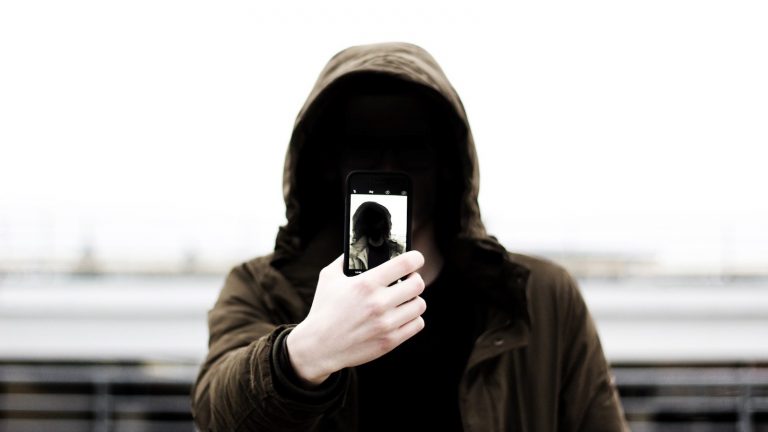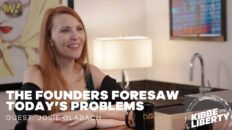“Disinformation” has become a serious concern as well as a term of abuse. Its presence, both real and imagined, has developed into a lazy explanation for our era of political discontent, particularly for those individuals considered to be on “the right.” However, conservative and libertarian distrust for American institutions is not merely a function of the internet nor susceptibility to “disinformation.” Nor is it simply an irrational byproduct of what historian Richard Hofstadter called the “paranoid style in American politics.”
Instead, it is a predictable response to a political history often framed by real conspiracies and duplicities initiated by state and non-government actors. Various organs of the federal government coupled with the corporate press are viewed by the right with disdain for their histories of unlawful and illiberal behavior.
Right-wing distrust of our institutions has a backstory that largely mirrors the commonly accepted grievances of the political left.
Like the left, the right has been the target of domestic espionage, selective regulatory enforcement, abuses of the police state, and the target of politically motivated media scrutiny. If this is hard to believe, historically the forces of ingroup bias, selective memorialization, and algorithmic suppression have been used against the left and the right.
However, the modern right is privy to this history and exists in a political culture shaped by it. For those who do not consider themselves liberal, progressive, centrist, or apolitical, understanding this history may help to alleviate some of the social tensions that American society is enduring.
On the eve of United States’ entry into World War II, American society was in the grips of what historian Leo P. Ribuffo called the “Brown Scare.” The Brown Scare was the political inverse of First and Second Red Scares, which bookended it. In the interwar period, U.S. government officials and ideologically aligned figures in the American media, played up the presence of American fascists as a type of “fifth column.” The presence of odious and illiberal right-wing figures like Father Charles Coughlin, the Silver Legion, and the American Bund was used as a bludgeon by liberals to smear their conservative opponents. Even after the war, liberals used the tenuous connections between their political opponents and fascism to tar American populism as the ideological heir to Nazism.
Liberal efforts to undermine conservative opposition to the war did not stop with mere media hit pieces. The FDR administration used the Federal Bureau of Investigation (FBI) to illegally surveil and wiretap the right-leaning and noninterventionist organization, the America First Committee (AFC). The federal government turned a blind eye, and at times colluded with British intelligence, to spy on American citizens, planted pro-Allied news stories in friendly media outlets, leaked unflattering stories about the AFC, and interfered in U.S. Congressional elections.
While at the time conservatives remained largely ignorant to the extent of these efforts, their revelation in the early 1960s confirmed some of their suspicions and initiated a new generation of wild conspiracism and reasoned distrust of the federal government and corporate press.
The early 1960s could accurately be called a Second Brown Scare, where the fear of fascism and other forms of “extremism” soaked in the minds of liberals. This concern went so far as to motivate them to use unlawful and illiberal means to suppress their political opponents. While the liberal anxiety about the postwar right simmered during the 1950s, it boiled over in the 1960s.
To deal with the threat of the “ultraright,” the federal government turned to the power of its regulatory agencies. At the behest of the Kennedy Administration, the Federal Communications Commission used the politically motivated and selective enforcement of the Fairness Doctrine to undermine the first generation of conservative talk radio. The FCC’s efforts were supported on the ground by astroturfed political action groups designed to saddle conservative broadcasters with expensive legal suits. The Internal Revenue Service also got in on the act and initiated politically motivated audits at the personal behest of President Kennedy.
Existing efforts to suppress the right reached a crescendo after the assassination of President John F. Kennedy. Despite Lee Harvey Oswald’s communist roots and affinity for the Soviet Union, American media outlets like the New York Times jumped to the conclusion that Kennedy’s killer must have been a right-wing extremist. Even after the revelation of Oswald’s left-wing politics, amorphous concerns with “extremism” coupled with the genuine instances of horrific racial violence, created the conditions for another wave of political espionage and suppression. The cumulative weight of the FCC and IRS, concurrent with the efforts of conservative gatekeepers like William F. Buckley, had their desired effect. The first generation of conservative broadcasters went bankrupt and were kept off the air during the early 1970s.
As with their forebears of the late 1930s, conservatives in the 1960s had suspicions that the FCC and IRS’s efforts were motivated by partisanship. But, as with the First Brown Scare, they lacked a smoking gun and were labeled “conspiracy theorists” for their fears. And again, later revelations would confirm their fears and strengthen the conservative persecution narrative.
American society is in the grips of a Third Brown Scare. Like the first two, this latest wave of panic is motivated by sincere concerns with violent and illiberal political actors. And, as with the first two, it is likely being cynically used to excise the right from American political culture. As in the past, actors within the federal government have used their power to unlawfully target conservative political organizations, surveil right-wing antiwar activists, and label conservatives as akin to America’s foreign adversaries.
However, modern American conservatives are largely privy to these historical instances of media and government malpractice this time, and have incorporated them into their own political history. And, unlike these previous panics, it is improbable that their distrust can be put down with the brute force of the regulatory state or collusion with corporate media. The diffusion of the internet and social media has made such crude censorship instruments nearly impossible. The attempted “cancellation” of controversial conservative media figures has only confirmed their fears, strengthened their narrative, and re-enforced Americans’ echo chambers.
Distrust, as with all things, has a history. If well-meaning Americans want to make sense of our current political malaise, they ought to reckon with the fact that some paranoias and suspicions are grounded in reality.














A few years ago, if I were approached by an agent of the FBI, I would have been cooperative and answered any reasonable questions. With the corruption of the last several years as well as the historical record chronicled by the author, I am now more inclined to call my lawyer.
[…] this crisis to deflect domestic criticisms of American institutions. Rather than own up to decades of failed policies, interventionists have shifted blame to “Russian disinformation” as the […]